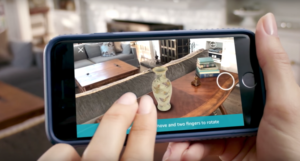ARCore is out!
In the summer of 2016 PokemonGo opened up pandora’s box for augmented reality (AR). The app was an instant hit around the world. While it’s user base has certainly declined since then, nearly two years later it still has a constant demand. Unfortunately, Pokemon are not the topic of this article (I could write some pretty good ones!). Instead we’ll focus on another stride in AR that took place earlier this week; Google’s release of ARCore.
On February 23rd Google officially released v1.0 of ARCore available on over 100 million Android devices. Individual developers can now design and publish their AR-based apps on the Play Store, and this only means that AR is going to become even more prevalent in our everyday lives. Speaking of Developer, if you are interested in becoming a developer you should check out my new Android developer course on Phonlabteachable.com
Compatible Phones:
While the list of phones is limited at the moment, you can experience this new wave of AR if you have one of the following phones:
- Pixel/XL

- Pixel 2/XL
- Samsung Galaxy S8/S8 Plus
- Note 8
- Galaxy S7/S7 Edge
- LG V30/30+
- Asus Zenfone AR
- OnePlus 5 /5T
ARCore is certainly not the first AR software to get into the hands of developers (Apple’s ARKit and Unity’s Vuforia), but it still marks a significant step towards AR becoming the norm on every device. Google has said they are partnering with many manufacturers this year to enable AR in upcoming devices. The bottom line: AR is here to stay.
AR’s Implications
As a developer myself AR is a beautiful thing because it empowers us to create more immersive experiences that can connect with other people. You’ll often hear gamer’s say that gaming is an art form that encompasses many others. Video games are an interactive visual and audio experience that can invoke feelings just like any other art if the story is told correctly. AR only creates more opportunities for this to happen, so it’s not surprising that most of the successful AR apps right now are video games.
But of course AR has much more use than just as a gaming feature. Industry giants like Amazon have already began releasing their personal touches. Amazon has utilized ARKit for a few months on iOS, and ARCore is now available on Android phones so that users can visualize what products will look like in their homes before ever purchasing. Google also partnered with Snap to create a virtual tour of Barcelona’s famous Camp Nou soccer stadium. I think it’s safe to say every tech giant in the world is thinking about either how they can incorporate AR, or what impact it’s going to have on their future. Even outside of tech a lot of other industries are gearing up for change as well.
With so many new reality technologies emerging, its an exciting time to be either a developer or a user. And with all this buzz about AR, let’s not forget that the end of the spectrum exists with products like the Vive containing fully immersive VR worlds. These differ from AR in that 100% of your surroundings are computer generated, not just a portion. There’s certainly a spectrum of how immersive AR can be. If we put reality on one end and VR on the other, AR is everything that falls in between.
What do you think the future holds for the immersive computing spectrum? Let us know in the comments below.



Super Fans always leave a comment :-)